- Clone
- N-GAD65 (See other available formats)
- Regulatory Status
- RUO
- Other Names
- Glutamate Decarboxylase 2, GAD65, Glutamate Decarboxylase 65 kD Isoform, GABA
- Isotype
- Mouse IgG1, κ
- Ave. Rating
- Submit a Review
- Product Citations
- publications
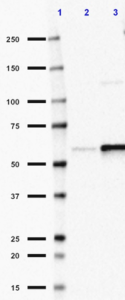
-

Western blot of purified anti-Glutamic Acid Decarboxylase (GAD65/GAD2) antibody (clone N-GAD65). Lane 1: Molecular weight marker; Lane 2: 30 µg of human brain lysate; Lane 3: 30 µg of mouse brain lysate. The blot was incubated with 1 µg/mL of the primary antibody overnight at 4°C, followed by incubation with HRP labeled goat anti-mouse IgG (Cat. No. 405306). Enhanced chemiluminescence was used as the detection system. -

IHC staining of purified anti-Glutamic Acid Decarboxylase (GAD65/GAD2) (clone N-GAD65) on formalin-fixed paraffin-embedded mouse brain tissue. Following antigen retrieval using Sodium Citrate H.I.E.R (Cat. No. 928602), the tissue was incubated with 10 µg/ml of the primary antibody overnight at 4°C. BioLegend´s Ultra-Streptavidin (USA) HRP kit (Multi-Species, DAB, Cat. No. 929901) was used for detection followed by hematoxylin counterstaining, according to the protocol provided. The image was captured with a 40X objective. Scale bar: 50 µm -

IHC staining of purified anti-Glutamic Acid Decarboxylase (GAD65/GAD2) (clone N-GAD65) on formalin-fixed paraffin-embedded rat brain tissue. Following antigen retrieval using Sodium Citrate H.I.E.R (Cat. No. 928602), the tissue was incubated with 10 µg/ml of the primary antibody overnight at 4°C. BioLegend´s Ultra-Streptavidin (USA) HRP kit (Multi-Species, DAB, Cat. No. 929901) was used for detection followed by hematoxylin counterstaining, according to the protocol provided. The image was captured with a 40X objective. Scale bar: 50 µm -

IHC staining of purified anti-Glutamic Acid Decarboxylase (GAD65/GAD2) (clone N-GAD65) on formalin-fixed paraffin-embedded human pancreas tissue. Following antigen retrieval using Sodium Citrate H.I.E.R (Cat. No. 928602), the tissue was incubated with 10 µg/ml of the primary antibody overnight at 4°C. BioLegend´s Ultra-Streptavidin (USA) HRP kit (Multi-Species, DAB, Cat. No. 929901) was used for detection followed by hematoxylin counterstaining, according to the protocol provided. The image was captured with a 40X objective. Scale bar: 50 µm
| Cat # | Size | Price | Quantity Check Availability | Save | ||
|---|---|---|---|---|---|---|
| 844502 | 100 µg | $276 | ||||
GAD gene encodes one of the several forms of glutamic acid decarboxylase, which is identified as a major autoantigen in insulin-dependent diabetes. The enzyme encoded is responsible for catalyzing the production of gamma-aminobutyric acid (GABA) from L-glutamic acid. A pathogenic role for this enzyme has been identified in the human pancreas since it has been identified as an autoantibody and an autoreactive T cell target in insulin-dependent diabetes. This gene may also play a role in the stiff man syndrome. GAD65 targets presynaptic clusters in axons and exhibits relative dendritic exclusion. GAD65 synthesizes GABA for neurotransmission and is only necessary at nerve terminals and synapses. In order to aid in neurotransmission, GAD65 forms a complex with Heat Shock Cognate 70 (HSC70), cysteine string protein (CSP) and Vesicular GABA transporter (VGAT), which, as a complex, helps package GABA into vesicles for release during neurotransmission.
Product DetailsProduct Details
- Verified Reactivity
- Human, Mouse, Rat
- Antibody Type
- Monoclonal
- Host Species
- Mouse
- Immunogen
- Peptide immunogen corresponding to amino acids 4-22 of human GAD65.
- Formulation
- Phosphate-buffered solution, pH 7.2, containing 0.09% sodium azide.
- Preparation
- The antibody was purified by affinity chromatography.
- Concentration
- 0.5 mg/ml
- Storage & Handling
- The antibody solution should be stored undiluted between 2°C and 8°C.
- Application
-
WB - Quality tested
IHC-P - Verified
IP - Reported in the literature, not verified in house - Recommended Usage
-
Each lot of this antibody is quality control tested by Western blotting. For Western blotting, the suggested use of this reagent is 1.0 - 10 µg per ml. For immunohistochemistry formalin-fixed paraffin-embedded tissues, a concentration range of 1.0 - 5.0 µg/ml is suggested. It is recommended that the reagent be titrated for optimal performance for each application.
- Application Notes
-
Additional reported applications (for the relevant formats of this clone) include: immunoprecipitation.1
For in vivo studies or highly sensitive assays, we recommend Ultra-LEAF™ purified antibody (Cat. No. 844503) with a lower endotoxin limit than standard LEAF™ purified antibodies (Endotoxin <0.01 EU/µg).
This antibody demonstrates weaker reactivity to human compared to mouse GAD65/GAD2 -
Application References
(PubMed link indicates BioLegend citation) -
- Hampe CS, et al. 2001. J. Neuroimmunol. 113:63. (IP, WB)
- Hampe CS, et al. 2007. Clin. Exp. Immunol. 148:72.
- Ziegler B, et al. 1996. Acta Diabetol. 33:225.
- Raju R, et al. 2005. J. Immunol. 175:7755.
- RRID
-
AB_2565802 (BioLegend Cat. No. 844502)
Antigen Details
- Structure
- 585 amino acids with a predicted molecular weight of 65 kD.
- Distribution
-
Cytoplasm, cytoplasmic vesicle, golgi apparatus, plasma membrane, and marker of pre-synaptic terminals.
- Function
- Catalyzes production of GABA from L-glutamic acid.
- Interaction
- Taurine and hypotaurine metabolism, transmission across chemical synapses.
- Cell Type
- GABAergic Neurons
- Biology Area
- Cell Biology, Neuroinflammation, Neuroscience, Neuroscience Cell Markers, Signal Transduction
- Antigen References
-
1. Walls A, et al. 2011. J. of Cerebral Blood Flow & Metabolism 31:494.
- Gene ID
- 2572 View all products for this Gene ID
- Specificity (DOES NOT SHOW ON TDS):
- Glutamic Acid Decarboxylase
- Specificity Alt (DOES NOT SHOW ON TDS):
- Glutamic Acid Decarboxylase (GAD65)
- App Abbreviation (DOES NOT SHOW ON TDS):
- WB,IHC-P,IP
- Hidden Names (DOES NOT SHOW ON TDS):
- GAD65, GAD2
- UniProt
- View information about Glutamic Acid Decarboxylase on UniProt.org
Related Pages & Pathways
Pages
Related FAQs
Other Formats
View All Glutamic Acid Decarboxylase (GAD65) Reagents Request Custom Conjugation| Description | Clone | Applications |
|---|---|---|
| Purified anti-Glutamic Acid Decarboxylase (GAD65/GAD2) | N-GAD65 | WB,IHC-P,IP |
| Alexa Fluor® 647 anti-Glutamic Acid Decarboxylase (GAD65/GAD2) | N-GAD65 | IHC-P |
Customers Also Purchased

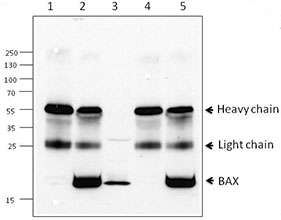
Compare Data Across All Formats
This data display is provided for general comparisons between formats.
Your actual data may vary due to variations in samples, target cells, instruments and their settings, staining conditions, and other factors.
If you need assistance with selecting the best format contact our expert technical support team.
-
Purified anti-Glutamic Acid Decarboxylase (GAD65/GAD2)
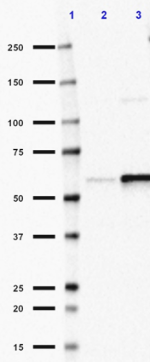
Western blot of purified anti-Glutamic Acid Decarboxylase (G... 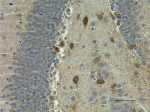
IHC staining of purified anti-Glutamic Acid Decarboxylase (G... 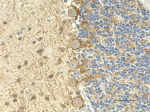
IHC staining of purified anti-Glutamic Acid Decarboxylase (G... 
IHC staining of purified anti-Glutamic Acid Decarboxylase (G... -
Alexa Fluor® 647 anti-Glutamic Acid Decarboxylase (GAD65/GAD2)

IHC staining of Alexa Fluor® 647 anti-Glutamic Acid Deca...
 Login/Register
Login/Register 









Follow Us